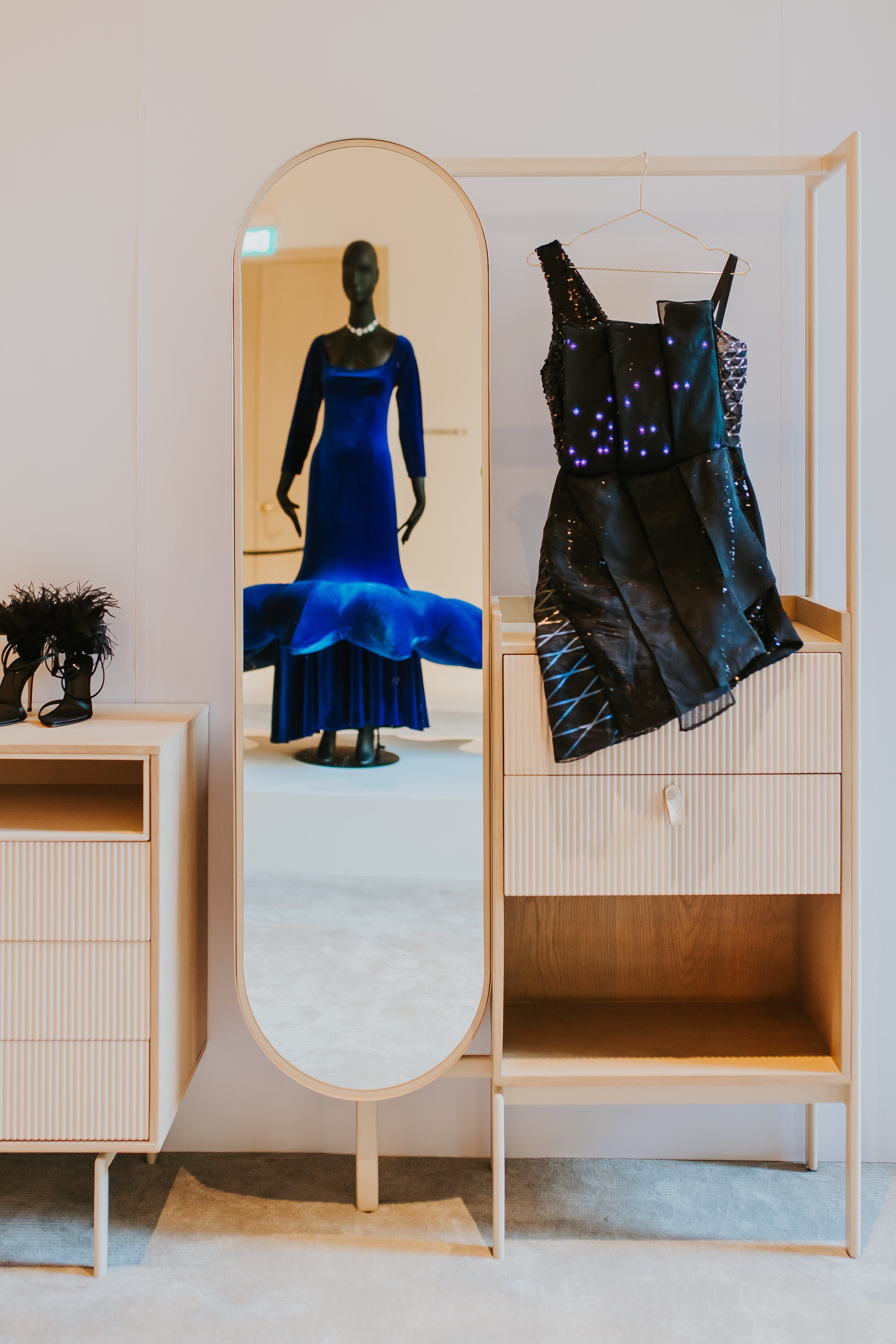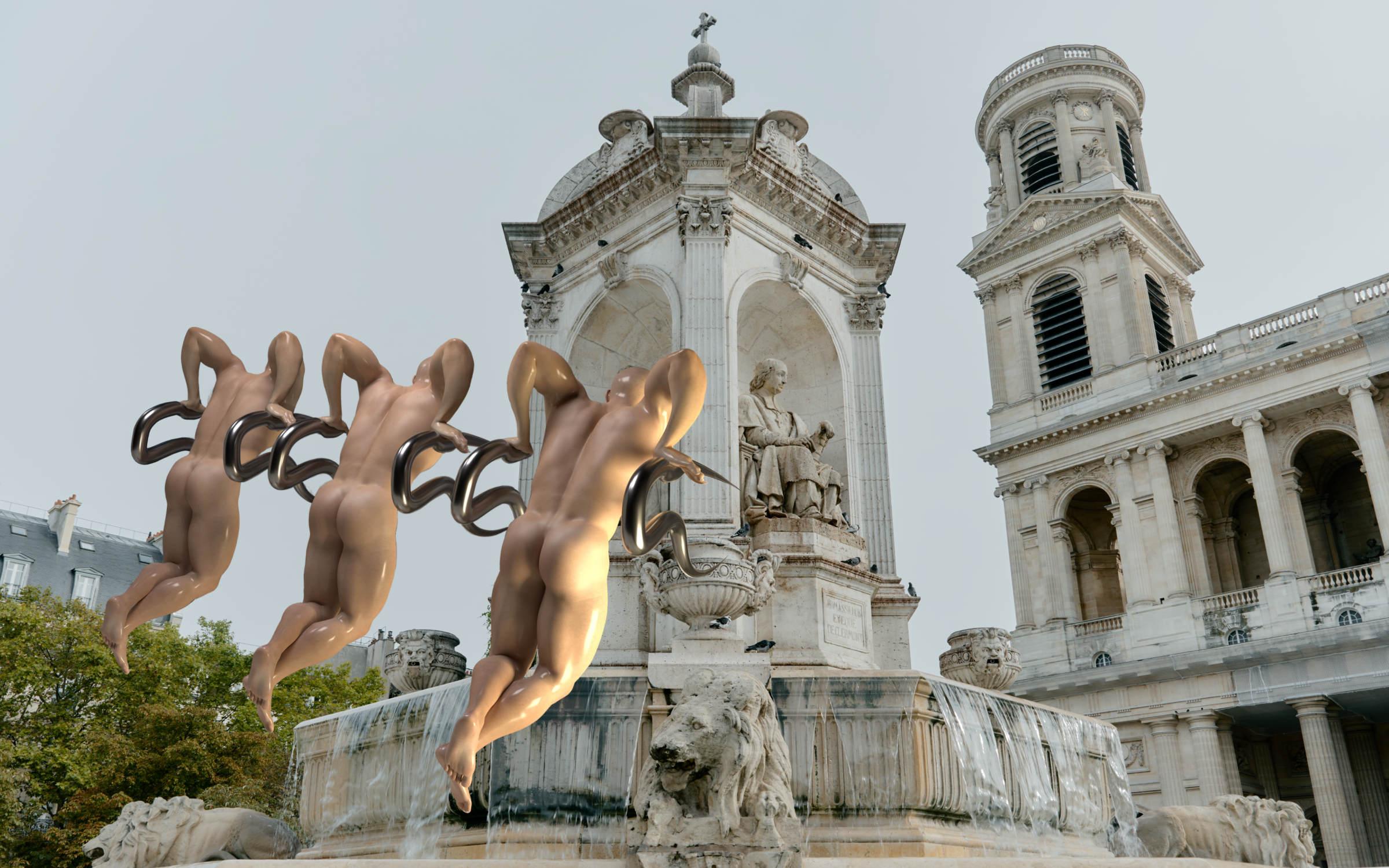Meet Raquel de Carvalho, The Rising Queen of Knitwear
PAIGE SILVERIA
FASHION
22 NOVEMBER
Meet Raquel de Carvalho, The Rising Queen of Knitwear
CFS Hub Catalyst Raquel de Carvalho talks to us about embracing sustainability as a growing brand.
There are a myriad ways for designers to improve towards circularity today, from digital prototypes and VR showrooms, to yarn derived from food waste and rental options. Each year the CFS Hub focuses on 10 independent brands who are keenly focused on the new frontier in sustainability and partner them with 10 technology innovators for mentorship and collaboration. Assessing new ways to improve upon each step of the product cycle, from inception to end of use, the 10 pairings will be showcasing their groundbreaking solutions at the #CFS22 Innovation Hub with unique opportunities to continue partnerships into the future.
For this year’s round, we’ve selected a handful of participants ahead of the summit for a Q&A to discuss their brand’s inception, process, and circular goals. First up is Sao Paulo-born, London-based designer, Raquel de Carvalho whose eponymously named label merges hand-crafted knitwear with sustainability-focused technology. On our call, we chatted about the contest that changed her trajectory, challenges young designers face, and what footwear is actually ideal in the metaverse.
So your brand is headquartered in London? What were the deciding factors for why you decided to be based there?
I have been here for three years now. I came to study at the London College of Fashion. After finishing my postgraduate course, I wanted to have some work experience and stay a bit longer. I’ve always seen London as a great place for experimentation and exploration. The brand also works with a small team in Brazil; all the artisanal work is produced there. But most of the design happens here in London. Of course it’s not easy at all to have my studio here. It’s very expensive and sometimes I feel like an outsider. But you also have so many opportunities to explore your creative side that it feels right to remain right now.
I feel like in New York, where I was based for over a decade, there’s a similar struggle of cost of living over the real sense of community there within creative industries. People continue to see the justification for the sacrifice.
Yeah, with the community, you know that everyone is going through the same thing. I was in Brazil recently and I was doing some work there. And it’s a different environment. As a Brazilian it’s of course easier for me to do everything there. I have family and friends and the environment I already know. It’s definitely challenging to be here, but I also know that I have different opportunities to exercise my creativity here. I’ll stay as long as it makes sense. Once I feel like it’s time to go somewhere else, I will.
How did you get started in design?
I did my BA in fashion design in Brazil first. At that time I wasn’t particularly interested in knitwear. Then I took a training program for young designers in Italy. It was the first time that I was out of Brazil and the first contact I had with knitwear, collaborating with Italian companies. I just fell in love and decided that that was what I was going to do. I started working with some brands and I got into fashion education teaching, which is something that I’m very passionate about.
And somehow I always knew that I would launch my brand eventually. But I didn’t have much confidence in myself. It felt terrifying, thinking about showing my vision of fashion to the world. I was kind of postponing it. By the end of 2020, an opportunity came for me to apply for a competition organized by Pitti Immagine and the Consorzio Promozione Filati in Italy. And it was this great thing because I could create the project during lockdown. I got together with a company here in London. I was able to try this idea that I had had for such a long time and show it to an important, professional audience, Pitti Filati. And I won. So that was life-changing for me.
What are you working on currently?
I’ve been researching and experimenting with some techniques for my upcoming collection. I don’t have an idea exactly about when I’m going to launch it. I’m still trying to figure it out: the structure of launching a collection, how to manage production. Most of my pieces are made to order, they’re one-offs. So that’s the big challenge, how to respond to the demand. I’ve also been experimenting with 3D digital scan prototyping, which is something I wasn't able to do for the previous collection. But it’s something that I’m excited about.
The hardest part is the production. For many of the pieces I had no idea that people would actually want them. Most of the manufacturers have minimum quantities and I didn’t want to overproduce items just to meet the requirements. That’s really what I’m focusing on, managing this transition from made-to-order pieces to working with things that go beyond the essence of my design aesthetics. But also thinking about distribution, quality control … this is really overwhelming!
How do you incorporate circularity and sustainability when designing — materials, processes, etc?
The yarns and other materials that I choose play an important role. Everything starts from there. I always try to make really well-informed decisions when it comes to this part of the process. Low-impact materials, things with a certification label confirming less energy and water waste, no deforestation in the production, renewable sources, etc.
But of course it’s not all the time that I’m able to make the choices that I want, being a small brand. But I really try to keep in mind that every piece and every collection is an opportunity to do better. There were a lot of choices I made for the previous collection that I’m going to continue with. For instance, reducing the use of synthetic fibers and choosing more renewable materials. I also try to manage the one-off pieces, reusing, upcycling previous samples, and deadstock yarn. I have so many materials that I’ve accumulated over time — since my BA! I’ve been trying to create small projects in order to use these materials, instead of buying new ones.
What are your goals for over the course of the next five years, circularity-wise?
For the future, I want to do 100% digital prototyping. I don’t want to waste time or materials on samples. I also want to implement a way for my customers to track the journey of each garment. There’s a specific knitwear software, but the license is really expensive so I wasn’t able to work with it for the past collection. I really believe it’ll be the future of fashion so I really want to work with it. Of course now that I’m participating in the CFS project, I’ll be able to explore phygital NFTs and think about ways to connect this to my customers. Additionally, I’ve been really into experimenting with the rental model for my pieces. I really want to be able to create less, while still having more people access the garments.
How would you describe the customer you're designing for?
Well I’d have to mention my close friend and muse, Augusto Cascales .He’s a queer performance artist, writer and filmmaker. I think he synthesizes the spirit of my customers. It’s all about embodying your freedom and using fashion as a way to perform and dress up, and not being stuck in gender and stereotypes. Bring fun, extravagance to dressing. Explore your body and sexuality.
What's your view on the state of fashion today?
We have a long way to go towards sustainability and circularity. But somehow I feel hopeful, because there are so many people out there doing great things and trying to make a difference. At the same time I feel there’s a huge pressure on young designers, students, and individuals to show that they’re going to save the fashion industry, while those in charge, the big companies and the government, aren’t taking effective action. In the end I guess the fashion industry is just a reflection of society right now. I don’t think we can have a healthy industry if society is facing so many issues like poverty, inequality, and corruption. I just hope that we’re going to continue to do what we can with the forces we have and we’ll continue to put pressure on the right people, those who have the money and power, to actually make some change.
Okay now for some fun questions. Is a digital human more comfortable in a Tom Sachs x NikeCraft Mars or Balenciaga Croc?
Can I say neither of them? I think it would be Havaianas, for sure. I’m Brazilian. So it’s flip-flops; they’re the best thing.
Would you invest $100k on a Crocodile Birkin or a Bored Ape NFT?
A Bored Ape NFT, because I would never buy a crocodile Birkin — ever. If I had the money, just no. I mean, crocodile? What they do is too insane to speak about it. It doesn’t make sense at all.
Give me an example of something that you would do or create in the metaverse that you wouldn’t IRL?
Well, I love metallic and shiny things. That's something I’d love to explore in my designs. But obviously because of the polyester and synthetic fibers, I'm not always able to work with those materials. So I would definitely do everything metallic and shiny, the whole collection.
Should more companies be like Pataganoia?
I think what they do is great and the brand seems very genuinely focused on sustainability. At the same time, I don’t think everyone should be exactly like them. Everyone needs to find their own way with the resources they have, to make things right. With the position they’re in, they’re able to do things that most brands and people aren’t. So each individual needs to find the balance for themselves within the industry between people, planet, design, etc.
the web3 hub to fashion sciene and culture
the web3 hub to fashion sciene and culture








